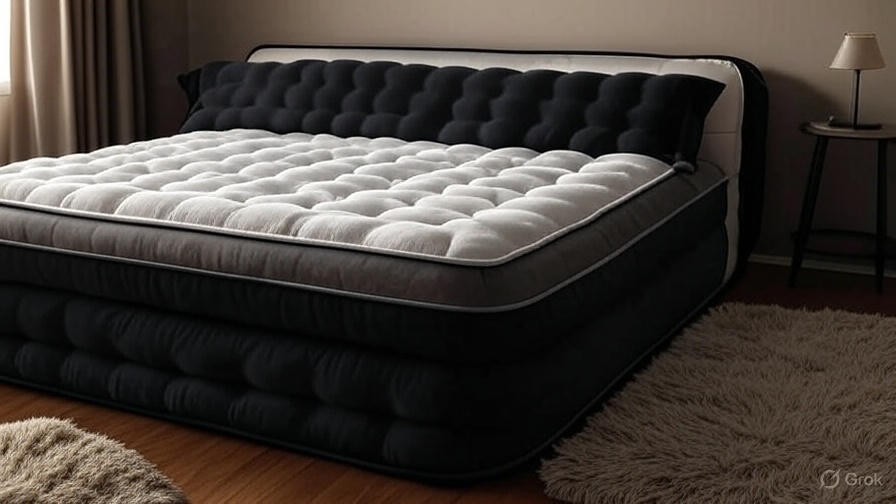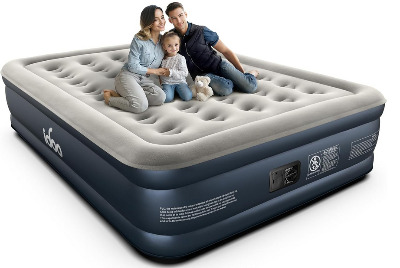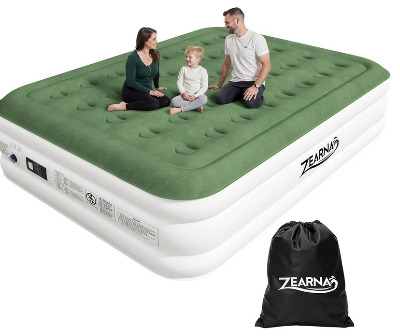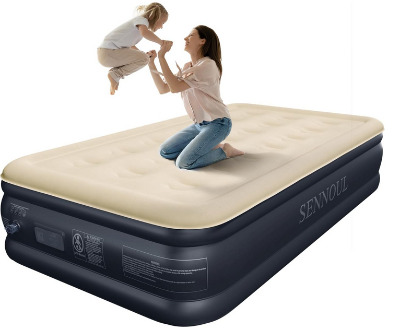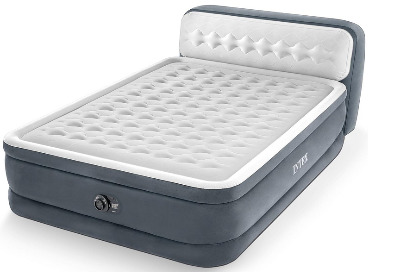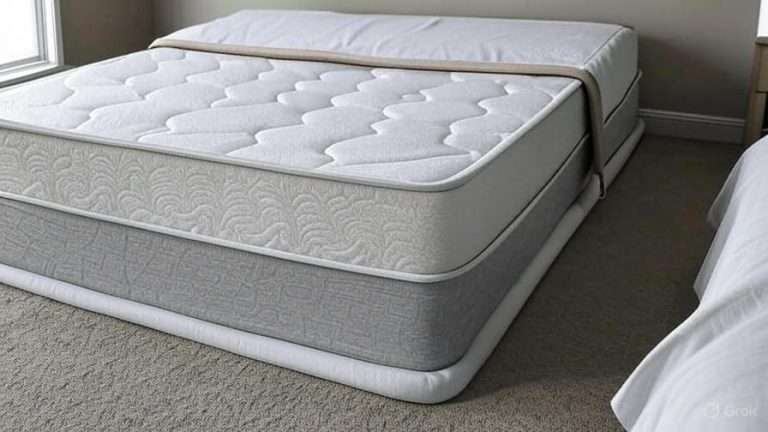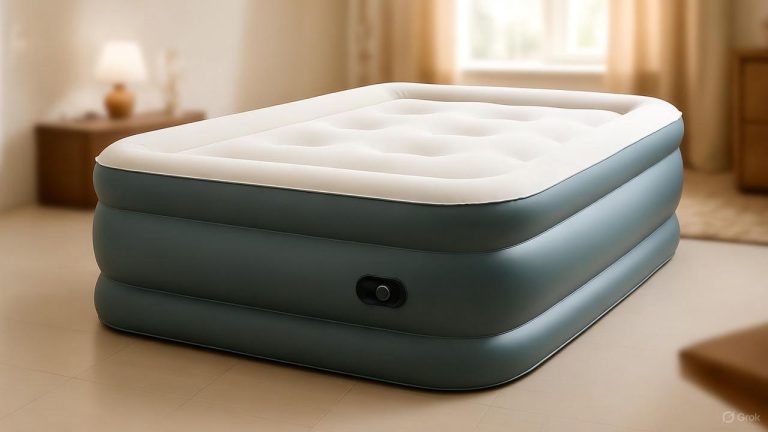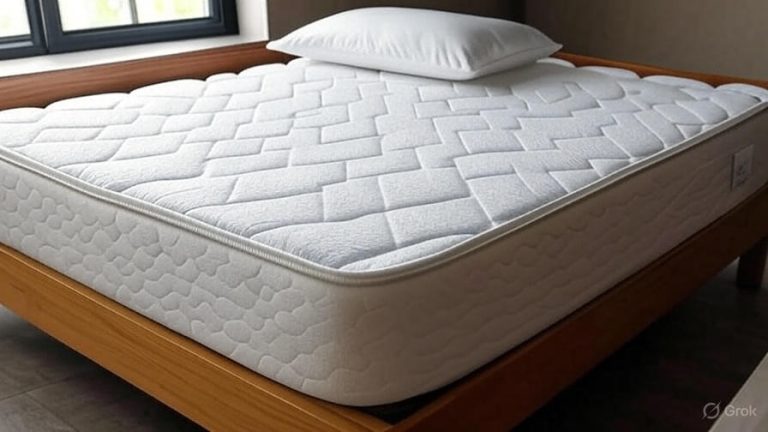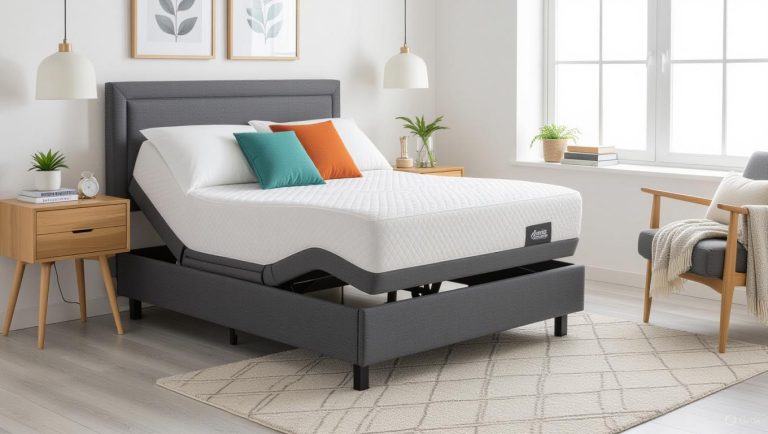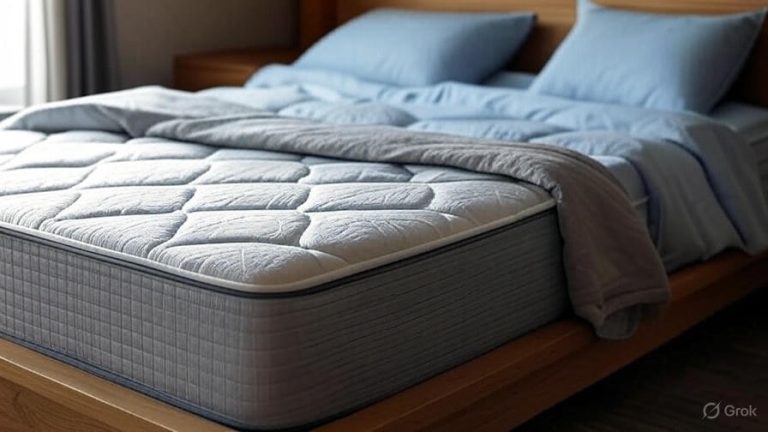5 Best Air Beds for Long Term Use In 2025
Air beds have evolved far beyond basic camping equipment. Today’s advanced inflatable mattresses offer comfort levels that rival traditional beds, making them viable options for extended daily use. Finding the right air bed for long-term sleeping requires careful consideration of durability, comfort features, and overall construction quality.
Modern air mattresses provide adjustable firmness, easy storage, and cost-effective solutions for various living situations. College students, frequent movers, and people in transitional housing often rely on high-quality air beds as their primary sleeping surface. The key lies in identifying products designed specifically for regular nightly use rather than occasional camping trips.
Essential Features for Long Term Air Bed Performance
Construction Quality and Materials
Durable air beds feature reinforced materials that resist punctures and maintain structural integrity over extended periods. Premium models utilize multiple layers of vinyl or PVC with fabric reinforcement zones. These enhanced materials prevent the gradual weakening that leads to leaks and premature failure in budget options.
Internal chamber designs play crucial roles in longevity. Multi-chamber construction prevents total deflation if one section experiences problems. This redundancy ensures continued usability even when minor issues arise. Advanced models incorporate fiber-tech construction, creating hundreds of small air chambers for superior support distribution.
Seam construction determines long-term reliability. Heat-welded seams outperform glued connections, providing stronger bonds that resist separation under repeated inflation cycles. Quality manufacturers employ double seams and reinforced stress points where pumps connect to the mattress.
Built-in Pump Systems
Integrated pumps eliminate the hassle of external equipment while providing consistent inflation pressure. Patented neverFLAT pump systems silently maintain optimal firmness throughout the night, addressing the common complaint of air bed deflation during sleep.
High-capacity pumps reduce inflation time, typically achieving full firmness within 3-5 minutes. Quick inflation becomes essential for daily use, as lengthy setup times create inconvenience for regular users. Look for pumps with multiple speed settings and deflation capabilities for efficient packing.
Quiet operation matters significantly for bedroom environments. Advanced pump designs minimize noise levels, allowing inflation without disturbing others in the household. Silent pumps enable air pressure adjustments during nighttime hours if firmness changes become necessary.
Size and Height Considerations
Standard queen size dimensions provide adequate space for couples while fitting comfortably in most bedrooms. Full-height models measuring 18 inches or more create bed-like experiences that ease getting in and out. Raised profiles also reduce the floor sleeping sensation that many people find uncomfortable.
Weight capacity directly correlates with durability and long-term performance. Models supporting 650+ pounds demonstrate robust construction capable of handling regular use without structural degradation. Higher weight ratings indicate stronger materials and superior internal support systems.
Storage considerations become important for people who occasionally need floor space for other activities. Compact folding designs and included storage bags facilitate easy packing when temporary room reconfiguration becomes necessary.
Detailed Reviews of Top Long Term Air Beds
iDOO Queen Air Mattress with Built-in Pump
The iDOO Queen Air Mattress represents excellent value for long-term use applications. Its 18-inch raised height creates a traditional bed experience that reduces the typical air mattress drawbacks. Four separate air chambers provide redundancy protection against total deflation scenarios.
Built-in pump performance impresses with 3-minute inflation times and quiet operation suitable for bedroom environments. The pump features both inflation and deflation functions, streamlining setup and breakdown processes. Multiple firmness levels accommodate different sleep preferences and body types.
Surface texture utilizes upgraded materials that resist slipping and sliding common with basic vinyl surfaces. The enhanced grip helps bedding stay in place throughout the night, improving overall sleep quality. Temperature regulation properties prevent excessive heat retention that affects comfort.
Weight capacity reaches 650 pounds, indicating robust construction suitable for two adults. The reinforced bottom panel resists punctures from rough surfaces, extending usable life significantly. Included carry bag facilitates storage and transport when needed.
Customer feedback consistently highlights durability and comfort for extended use periods. Users report maintaining proper firmness for weeks without requiring re-inflation, demonstrating superior air retention capabilities compared to budget alternatives.
OhGeni Air Mattress Queen with Built-in Pump
OhGeni’s queen air mattress focuses on comfort optimization for regular sleeping use. The 18-inch raised design provides easy access while creating adequate under-bed clearance for storage purposes. Advanced surface texturing improves bedding compatibility and reduces movement during sleep.
Internal construction employs upgraded four-chamber design with reinforced connection points. This engineering approach distributes weight evenly while providing backup support if individual chambers experience pressure loss. The system maintains overall bed integrity even with minor air loss incidents.
Pump integration offers efficient inflation with minimal noise production. The system completes full inflation cycles in under 4 minutes while maintaining whisper-quiet operation. Multiple firmness settings enable customization for different body weights and sleep preferences.
Material quality emphasizes puncture resistance through multi-layer construction. The exterior features enhanced vinyl that resists environmental factors like temperature fluctuations and humidity changes. UV-resistant properties prevent degradation from sunlight exposure during storage periods.
Long-term performance data indicates consistent pressure retention over extended use periods. Users report minimal overnight deflation, maintaining comfort levels throughout complete sleep cycles. The combination of materials and construction methods supports regular nightly use scenarios.
2025 Upgraded Queen Air Mattress with Built-in Pump
This upgraded model incorporates recent technological improvements specifically targeting long-term use challenges. The 16-inch profile balances accessibility with storage convenience while providing adequate height for comfort. Enhanced chamber design utilizes advanced pressure distribution technology.
Surface innovations include quiet materials that reduce noise from movement and position changes. This feature becomes particularly important for couples sharing the mattress, as partner movement generates less disturbance. The upgraded texture also improves bedding compatibility and retention.
Built-in pump performance benefits from recent engineering refinements. Inflation time drops to approximately 2.5 minutes while maintaining low noise levels suitable for apartment living. The pump includes auto-shutoff features that prevent over-inflation damage.
Storage bag design incorporates heavy-duty materials that resist tearing during packing processes. The bag includes compression straps that reduce packed volume, making storage in closets or under beds more practical. Quick-pack design enables rapid breakdown for occasional storage needs.
Durability testing indicates superior performance under regular use conditions. The 660-pound weight capacity demonstrates structural integrity that supports long-term sleeping applications. Enhanced seam technology reduces leak potential while improving overall mattress longevity.
Twin Air Mattress with Built-in Pump Raised
Single sleepers benefit from this twin-sized option that prioritizes quick setup and reliable performance. The 18-inch raised height provides traditional bed comfort in a compact footprint suitable for smaller rooms or studio apartments. Advanced single-chamber design optimizes firmness consistency.
Rapid inflation technology achieves full firmness in just 2 minutes, making daily setup practical for regular use scenarios. The integrated pump operates quietly while providing both inflation and deflation capabilities. Quick-deflation features enable rapid packing for storage or relocation.
Construction quality emphasizes leak prevention through advanced seam welding and reinforced stress points. The 550-pound weight capacity indicates robust materials capable of supporting regular use without structural compromises. Enhanced bottom panel resists punctures from various floor surfaces.
Compact storage dimensions appeal to users with limited space availability. The included carrying case facilitates easy transport and protection during storage periods. Lightweight design enables single-person handling while maintaining durability for long-term applications.
Performance characteristics include excellent air retention that minimizes overnight pressure loss. Users report consistent comfort levels throughout complete sleep cycles with minimal firmness degradation. The combination makes this model suitable for primary sleeping arrangements in appropriate space configurations.
Intex 64447ED Dura-Beam Deluxe Ultra Plush Air Mattress
Intex brings established brand reliability to long-term air bed applications with advanced Dura-Beam construction technology. The internal structure utilizes thousands of high-strength fibers that create consistent support across the entire sleeping surface. This innovation addresses common air mattress comfort complaints.
Ultra plush top surface provides enhanced comfort that approaches traditional mattress feel. The flocked finish reduces slipping while improving temperature regulation compared to basic vinyl surfaces. Integrated headboard design adds convenience for reading and relaxing activities.
Fiber-Tech construction represents significant advancement in air mattress engineering. The internal fiber network maintains shape integrity while providing superior support distribution. This technology reduces the unstable feeling associated with basic air chambers, creating more natural sleeping experiences.
Electric pump integration offers convenient inflation with household electrical connections. The powerful motor achieves full inflation quickly while maintaining quiet operation suitable for indoor use. Multiple firmness levels accommodate different sleep preferences and body types effectively.
Weight capacity reaches 600 pounds, demonstrating structural capability for two-person use scenarios. The robust construction handles regular inflation cycles without degradation, supporting long-term sleeping applications. Brand reputation provides confidence in product reliability and customer support availability.
Health Considerations for Long Term Air Bed Use
Spinal Support and Alignment
Long-term use may lack the support and contouring of a traditional mattress, potentially causing discomfort and back pain. Chiropractors caution against extended use without proper consideration of spinal health needs. However, adjustable firmness capabilities can help address individual support requirements when properly utilized.
Quality air beds with advanced chamber designs provide better support than basic models. Multiple firmness levels enable users to find optimal spinal alignment for their body type and sleeping position. Regular firmness adjustments can prevent pressure point development that leads to discomfort.
Sleep position considerations become crucial for long-term air bed use. Side sleepers may require softer settings to accommodate hip and shoulder pressure points, while back sleepers often benefit from firmer configurations. Stomach sleepers typically need moderate firmness to prevent spinal hyperextension.
Sleep Quality Factors
Temperature regulation capabilities affect long-term comfort significantly. Enhanced surface materials improve airflow and reduce heat retention compared to basic vinyl construction. Some users find air beds naturally cooler than memory foam alternatives, particularly during warm weather periods.
Motion isolation varies among air bed designs, with multi-chamber models providing better partner disturbance reduction. This factor becomes important for couples using air beds as primary sleeping surfaces. Advanced internal construction minimizes movement transfer between sleeping partners.
Edge support limitations common in air beds may affect sleep quality over extended periods. Users who prefer sleeping near mattress edges or sitting on bed sides may find air beds less satisfactory than traditional mattresses. However, raised models with reinforced perimeters address these concerns partially.
Maintenance Requirements for Longevity
Regular inspection routines help identify potential issues before they become major problems. Weekly visual checks for wear signs, seam integrity, and valve condition can prevent sudden failures. Early detection enables repairs that extend mattress usable life significantly.
Proper inflation management prevents over-pressurization that stresses seams and materials. Temperature changes affect air pressure, requiring occasional adjustments to maintain optimal firmness. Understanding these dynamics helps users maintain consistent comfort while preventing damage.
Cleaning protocols specifically designed for air bed materials maintain hygiene without causing deterioration. Mild soap solutions and thorough drying prevent mold and mildew growth that can compromise materials. Regular cleaning also prevents odor development that affects sleep quality.
Air mattresses can endure for two to eight years when properly maintained and used occasionally. Keep the air mattress in a cool, dry area free of sharp items to prevent punctures. Proper storage techniques significantly extend usable life for long-term sleeping applications.
Practical Setup and Daily Use Tips
Optimal Placement Strategies
Floor preparation significantly impacts air bed performance and longevity. Smooth, clean surfaces prevent punctures while providing stable foundations. Carpet padding or thin mattress protectors add cushioning that improves comfort while protecting against rough textures.
Room ventilation affects both comfort and mattress condition. Adequate airflow prevents condensation buildup that can lead to mold growth underneath mattresses. Proper ventilation also helps regulate temperature for improved sleep quality.
Electrical outlet accessibility becomes important for models with built-in pumps requiring periodic inflation maintenance. Planning cord routing prevents tripping hazards while ensuring easy access for adjustments. Extension cord use should follow safety guidelines and manufacturer recommendations.
Bedding Compatibility and Selection
Fitted sheet selection requires attention to air bed dimensions and height specifications. Deep-pocket sheets accommodate raised air beds better than standard depths. Elastic quality affects sheet retention during sleep movement and position changes.
Mattress pad use can improve comfort while protecting air bed surfaces from wear. Breathable materials prevent heat retention while providing additional cushioning. Waterproof protectors offer spill protection without compromising air bed functionality.
Pillow and bedding weight considerations help prevent unnecessary pressure on air bed surfaces. Heavy comforters may cause slight deflation sensations, particularly with softer firmness settings. Lighter bedding options often provide better overall sleeping experiences.
Daily Maintenance Routines
Morning inspection habits help identify issues requiring attention. Quick visual checks for obvious deflation, surface damage, or valve problems take minimal time while preventing larger issues. Early detection enables prompt repairs that extend mattress life.
Firmness adjustment techniques accommodate temperature and pressure changes throughout daily cycles. Learning optimal inflation levels for different conditions improves consistent comfort. Some users prefer slightly firmer morning inflation to compensate for gradual overnight pressure loss.
Storage protocols for temporary breakdown situations maintain mattress condition during non-use periods. Proper deflation sequences prevent valve damage while ensuring complete air removal. Clean, dry storage prevents mold growth and material degradation.
Cost Analysis and Long Term Value
Initial Investment Considerations
Premium air beds command higher prices but often provide superior long-term value through enhanced durability and comfort features. Quality construction materials and advanced pump systems justify increased costs for users planning extended daily use.
Budget alternatives may seem attractive initially but often require replacement sooner due to material failures or comfort inadequacies. False economy results when frequent replacements exceed the cost of higher-quality initial purchases.
Brand reputation and warranty coverage provide additional value considerations. Established manufacturers typically offer better customer support and replacement part availability. Extended warranty terms indicate manufacturer confidence in product longevity.
Operating Cost Factors
Electricity usage for built-in pumps represents minimal ongoing costs for most users. Efficient pump designs consume minimal power during periodic inflation maintenance. Energy costs remain negligible compared to traditional mattress expenses.
Replacement part availability affects long-term ownership costs. Models with serviceable pumps and valve systems enable repairs that extend usable life. Proprietary components may require manufacturer contact for service needs.
Accessory costs including replacement pumps, repair kits, and protective covers add to total ownership expenses. Quality models often include comprehensive accessory packages that provide better initial value compared to basic offerings.
Replacement Timeline Planning
Air beds last for about 2-8 years. Proper maintenance prolongs its wear and tear status, with regular use typically reducing this timeframe compared to occasional camping applications. Planning replacement schedules helps budget for future needs.
Usage intensity directly affects replacement timing requirements. Daily use accelerates wear compared to guest room applications, requiring more frequent replacement cycles. Understanding these factors helps set realistic expectations for air bed longevity.
Technology advancement rates in air bed design suggest periodic upgrades may provide improved performance even before replacement necessity. New features like enhanced pumps, better materials, and improved comfort systems justify earlier upgrades for some users.
Environmental and Space Efficiency Benefits
Space Utilization Advantages
Deflatable storage capabilities provide unique space management solutions unavailable with traditional mattresses. Studio apartments, tiny homes, and multipurpose rooms benefit from furniture that completely disappears when not needed.
Quick room conversion from bedroom to living space enables flexible use of limited square footage. This capability particularly benefits urban dwellers and temporary living situations where space optimization becomes essential.
Moving and relocation advantages include lightweight, compact packing that reduces transportation costs and complexity. Traditional mattresses require special handling and transportation arrangements, while quality air beds pack into manageable carrying cases.
Environmental Impact Considerations
Manufacturing footprint for air beds typically requires fewer materials compared to traditional mattress construction. Reduced material consumption translates to lower environmental impact during production phases.
Disposal considerations favor air beds over traditional mattresses that create significant waste disposal challenges. Recyclable materials and compact disposal footprints reduce environmental impact at end-of-life.
Transportation efficiency benefits include reduced shipping volume and weight that lower carbon footprint during distribution. Compact packaging enables more efficient logistics compared to traditional mattress shipping requirements.
Expert Recommendations and Best Practices
Professional Installation Guidelines
Proper setup procedures ensure optimal performance and longevity from air bed investments. Following manufacturer instructions prevents damage during initial inflation and reduces warranty voiding risks.
Environmental factor considerations include temperature stability, ventilation adequacy, and surface preparation. These factors significantly impact both comfort and durability over extended use periods.
Safety protocol adherence includes electrical safety for built-in pumps, proper ventilation to prevent carbon dioxide buildup, and weight limit compliance. Following these guidelines ensures safe operation during long-term use scenarios.
Usage Optimization Strategies
Firmness calibration techniques help users identify optimal inflation levels for different activities and sleep positions. Experimentation during initial use periods establishes preferences that improve long-term satisfaction.
Rotation and repositioning schedules distribute wear patterns that extend mattress life. Regular position changes prevent excessive wear in specific areas that experience concentrated use.
Partner coordination strategies for shared air beds include firmness compromise techniques and movement minimization practices. Communication and adjustment help couples successfully utilize air beds for long-term sleeping arrangements.
Troubleshooting Common Issues
Leak detection methods enable quick identification of air loss sources that affect comfort and performance. Systematic inspection techniques help locate problems before they become major failures.
Repair procedures for minor issues can extend mattress life significantly when performed correctly. Understanding repair limitations helps users determine when professional service or replacement becomes necessary.
Performance degradation recognition helps users identify when air beds no longer provide adequate comfort or support for long-term use. Knowing replacement indicators prevents continued use of inadequate sleeping surfaces.
Future Technology Trends in Air Bed Design
Smart Technology Integration
Emerging smart air bed technologies include automatic pressure monitoring, smartphone app control, and sleep pattern tracking capabilities. These innovations promise improved convenience and performance optimization for long-term users.
IoT connectivity enables remote monitoring and adjustment capabilities that enhance user experience. Smart pumps can automatically maintain optimal pressure levels without user intervention, addressing common air bed complaints.
Health monitoring integration may provide sleep quality metrics and recommendations for firmness optimization. Advanced sensors could track movement patterns and adjust support characteristics automatically throughout sleep cycles.
Material Science Advances
New material technologies promise improved durability, comfort, and performance characteristics. Advanced polymers and composite materials may eliminate traditional air bed limitations while maintaining core benefits.
Puncture-resistant innovations using nanotechnology and fiber reinforcement could dramatically improve longevity. These advances may make air beds more comparable to traditional mattresses in terms of durability expectations.
Temperature regulation improvements through phase-change materials and advanced surface treatments promise better sleep climate control. These innovations address common complaints about air bed temperature management.
Conclusion
The best air beds for long-term use combine advanced materials, reliable pump systems, and thoughtful design features that address common concerns about extended air mattress sleeping. Quality models like the iDOO Queen Air Mattress, OhGeni Queen with Built-in Pump, and Intex Dura-Beam Deluxe demonstrate that modern air beds can provide comfortable, durable sleeping solutions for various living situations.
Success with long-term air bed use requires realistic expectations, proper maintenance practices, and careful selection of models designed for regular sleeping rather than occasional camping use. While air beds may not completely replace traditional mattresses for all users, they offer valuable solutions for specific circumstances including temporary housing, space-constrained living, and budget-conscious consumers.
The key to satisfaction lies in investing in quality construction, understanding maintenance requirements, and utilizing air beds’ unique advantages like adjustable firmness and space-saving storage capabilities. With proper selection and care, modern air beds can provide comfortable sleeping solutions that meet long-term needs while offering flexibility unavailable in traditional mattress options.
Future developments in air bed technology promise even better performance, durability, and comfort characteristics. As materials science advances and smart technology integration improves, air beds will likely become increasingly viable alternatives to traditional mattresses for extended daily use applications.

